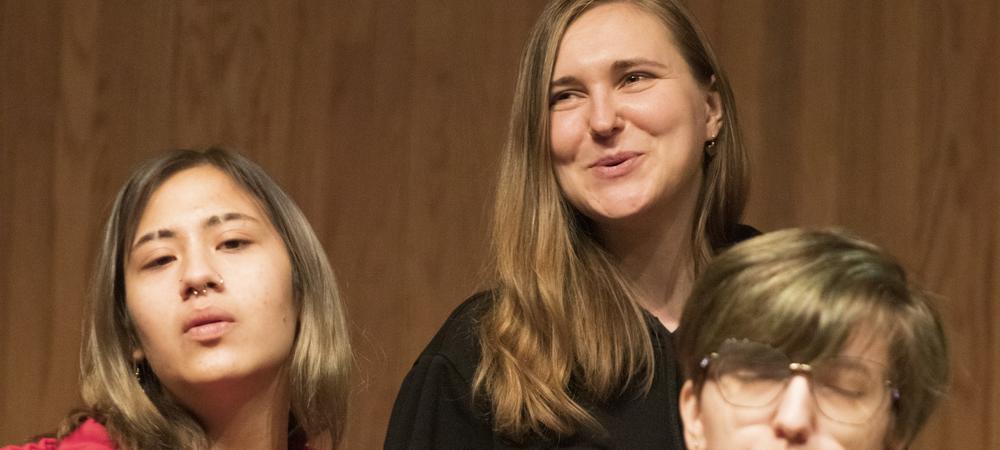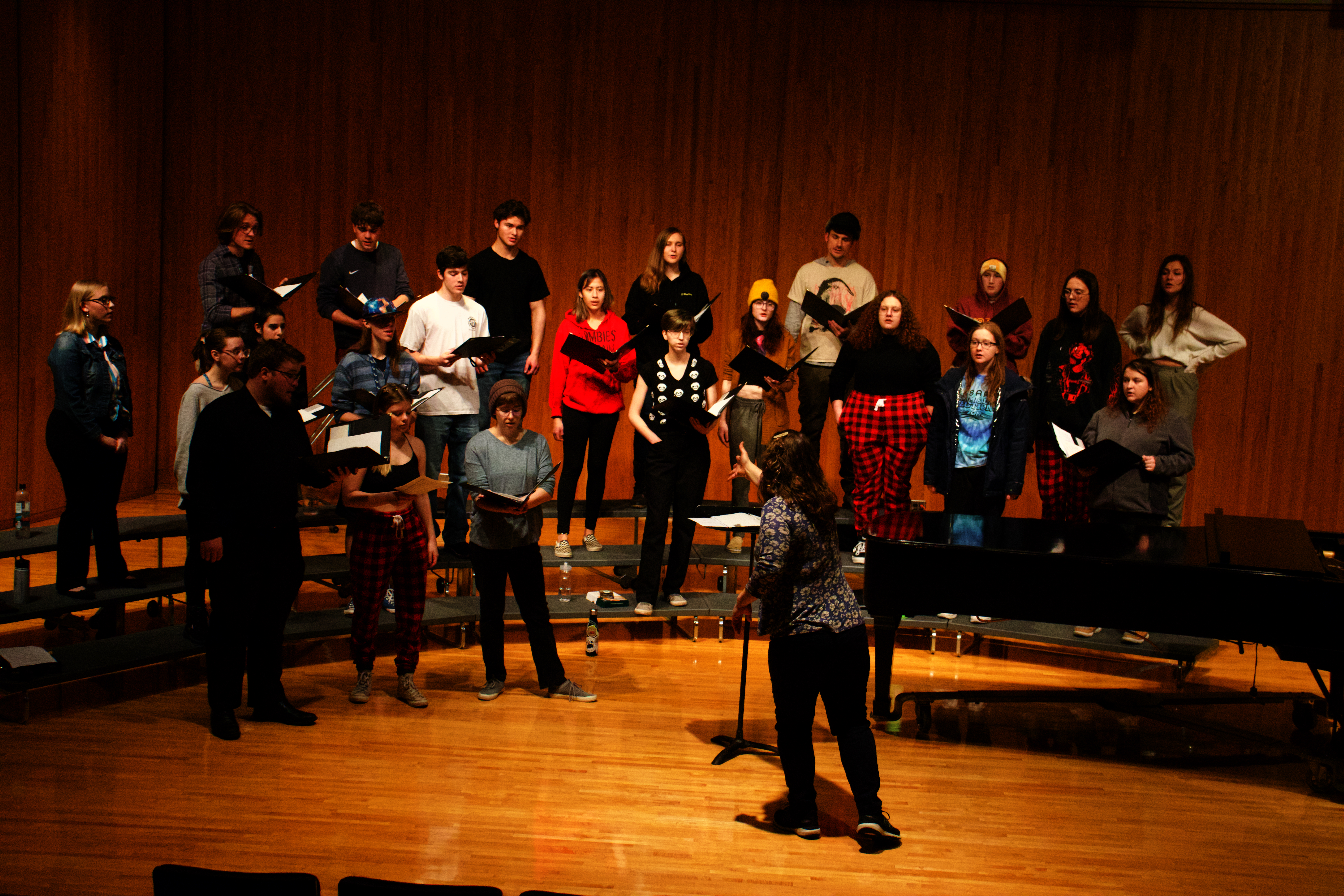
A research project focused on community music ensembles across Minnesota got an international twist during fall semester, with the addition of student intern Krystyna Krupko.
Krupko joined Associate Music Professor Denise Odello on the Musical Minnesota research project to identify and amplify the benefits of community music ensembles in greater Minnesota. The project is supported in part by the Center for Small Towns, which is part of the Clifford J. Benson Center for Community Partnerships and the University of Minnesota Morris.
Now in the second year of the project, Odello is surveying ensemble leaders on how to support and amplify the cultural benefits of these groups. She says Krupko was a tremendous asset in that regard.
Krupko is an exchange student from the University of Potsdam, a public university in Potsdam, capital of the state of Brandenburg, Germany. She arrived in Morris in August of 2022 and was looking for American cultural experiences.
Krupko is interested in music and was a member of UMN Morris Concert Choir. She chose to participate in this research project in part because, even though she is fluent in several languages, music is the most accessible.
“I had an idea in my head what the United States would be like, and working on this project gives me the cultural experience I was hoping to have. I am looking at how community music ensembles are organized and their value to their citizens in Minnesota.”

The purpose of the community music project is building the connection among small towns to sustain cultural growth. Krupko believes that can be achieved through interaction between these different "small worlds,'' which have their own lives and their own problems. “The exchange of information among them would lead to understanding of what might be done better.”
Krupko is originally from what she describes as a small town in eastern Ukraine, and has been attending college in Germany. Although, she admits that she had to adjust her idea of what a small town is after arriving in Morris.
“Morris is a very small town in comparison. My hometown has 150,000 people and is quite different economically. There are many factories, it’s much more industrial.” But Krupko notes there were not many cultural activities available there.
As part of her work on the project, Krupko continued to add community ensembles to the database. By the end of the semester, more than 100 groups had been identified throughout Minnesota. At this time, 50 of those groups were included on a map that can be used to find ensembles in all parts of the state. Krupko stated that “more ensembles means more possibilities to create communities.”
Odello says community ensembles are often intergenerational and are a good way to bring a community together in a very focused way. She points out that these ensembles often bring together people who normally wouldn’t interact socially.
Krupko found that one of the biggest issues facing community music ensembles is the lack of public transportation in outstate areas. “There is more isolation for musicians in smaller, rural communities, making it harder to interact.”
Lack of transportation was something that had an impact on Krupko’s overall experience at UMN Morris. Without a car of her own, Krupko had to stitch together rides on shuttles, buses, and on occasion, rides from her professors and other students to get to and from Morris.
Odello agrees with Krupko’s assessment about the public transportation void. Odello routinely travels an hour each way to participate in a regional symphony orchestra, an opportunity that is only possible because she has her own vehicle.
“One of the goals of this research project is to try to find ways to connect musicians across generations and across the rural landscape,” Odello said. “It can be hard to see progress on the long path of research. But Krystyna brought a whole new perspective to the project and was able to see things in the survey data that will impact how we proceed.”
One of the cultural connections that was most significant involved UMN Morris Concert Choir. While the group was selecting the music for their annual holiday concert, Krupko suggested a popular Ukrainian song, “Rushnyk.” A rushnyk is a long and elaborately embroidered rectangular cloth that is presented by parents to their children as a blessing for a good path. The song by itself is about gratefulness to your mother who gave you this path. Associate Music Professor Wes Flinn arranged a version for the choir to perform, which was an emotional moment for both.
Krupko had started planning her trip to the U.S. months before the war in Ukraine started. When asked to sum up her thoughts about her time in the U.S., Krupko said she had a wonderful experience of studying, working, and traveling in this part of the world.
“There's an important thing which I understood thanks to travels: you need to interact with completely different people to have a possibility to see what can be done better.”
